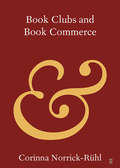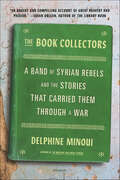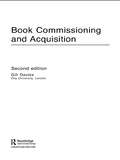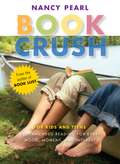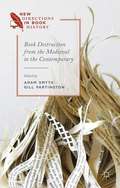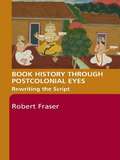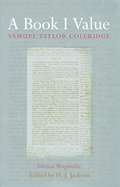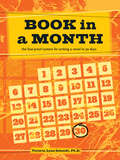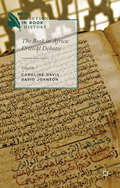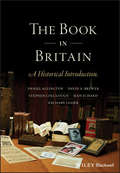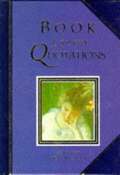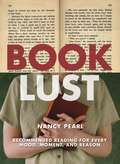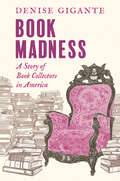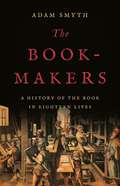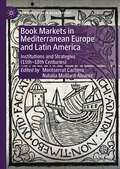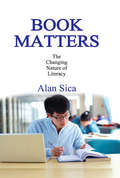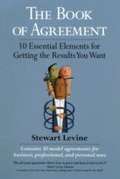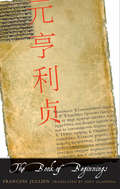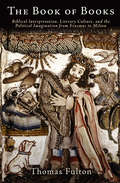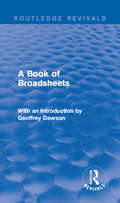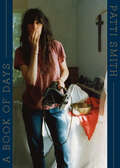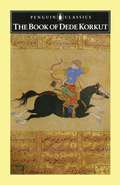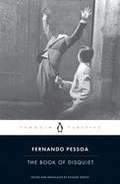- Table View
- List View
Book Clubs and Book Commerce: Volume 1 (Elements in Publishing and Book Culture)
by Corinna Norrick-RühlIn the 20th century, cumulative millions of readers received books by mail from clubs like the Book-of-the-Month Club, the Book Society or BertelsmannClub. This Element offers an introduction to book clubs as a distribution channel and cultural phenomenon, and shows that book clubs and book commerce are linked inextricably. It argues that a global perspective is necessary to understand the cultural and economic impact of book clubs in the 20th and into the 21st century. It also explores central reasons for book club membership, condensing them into four succinct categories: convenience, community, concession and, most importantly, curation. This title is also available as Open Access on Cambridge Core.
The Book Collectors: A Band of Syrian Rebels and the Stories That Carried Them Through a War
by Delphine MinouiA BEST BOOK OF THE YEAR: NPR"An urgent and compelling account of great bravery and passion." —Susan OrleanAward-winning journalist Delphine Minoui recounts the true story of a band of young rebels, a besieged Syrian town, and an underground library built from the rubble of warReading is an act of resistance.Daraya is a town outside Damascus, the very spot where the Syrian Civil War began. Long a site of peacefulresistance to the Assad regimes, Daraya fell under siege in 2012. For four years, no one entered or left, and aid was blocked. Every single day, bombs fell on this place—a place of homes and families, schools and children, now emptied and broken into bits.And then a group searching for survivors stumbled upon a cache of books in the rubble. In a week, they had six thousand volumes; in a month, fifteen thousand. A sanctuary was born: a library where people could escape the blockade, a paper fortress to protect their humanity.The library offered a marvelous range of books—from Arabic poetry to American self-help, Shakespearean plays to stories of war in other times and places. The visitors shared photos and tales of their lives before the war, planned how to build a democracy, and tended the roots of their community despite shell-shocked soil. In the midst of the siege, the journalist Delphine Minoui tracked down one of the library’s founders, twenty-three-year-old Ahmad. Over text messages, WhatsApp, and Facebook, Minoui came to know the young men who gathered in the library, exchanged ideas, learned English, and imagined how to shape the future, even as bombs kept falling from above. By telling their stories, Minoui makes a far-off, complicated war immediate and reveals these young men to be everyday heroes as inspiring as the books they read. The Book Collectors is a testament to their bravery and a celebration of the power of words.
Book Commissioning and Acquisition
by Gill DaviesSince its first publication, this essential guide to book commissioning has established itself as the one and only 'must-read' for any successful editor, and the core training text used both within publishing houses and on publishing courses worldwide.In this new edition, Davies concentrates on the essential skills of commissioning, as well as other editorial challenges such as handling new lists following mergers and takeovers, and the demands of digital technology. New case-studies have been added which illustrate the commercial and practical problems that editors must address in today's complex and demanding marketplace.This book remains the one text that editors must have by their side throughout their careers.
Book Crush: For Kids and Teens - Recommended Reading for Every Mood, Moment and Interest
by Nancy PearlFrom picture books to chapter books, YA fiction and nonfiction, Nancy Pearl has developed more thematic lists of books to enjoy. The Book Lust audience is committed to reading, and here is a smart and entertaining tool for picking the best books for kids. Divided into three sections--Easy Books, Middle-Grade Readers, and Young Adult--Nancy Pearl makes wonderful reading connections by theme, setting, voice, and ideas. For horse lovers, she reminds us of the mainstays in the category (Black Beauty, Misty of Chincoteague, etc.) but then in a creative twist connects Mr. Revere and I to the list. In a list called Chapter One, she answers the proverbial question: which chapters books are the most compelling for kids who are now ready to move beyond picture books. And who says picture books aren't deep? Recommended Folk Tales sort out many of life's dilemmas and issues of good and bad; a selection of picture books on Death and Dying introduces this topic with sensitivity; and You've Got a Friend offers up books for early readers that show the complexities and the pleasures of relating to others. Parents, teachers, and librarians are often puzzled by the unending choices for reading material for young people. It starts when the kids are toddler and doesn't end until high-school graduation. What's good, what's trash, what's going to hold their interest? Nancy Pearl, America's favorite librarian, points the way in Book Crush.
Book Destruction from the Medieval to the Contemporary
by Gill PartingtonThis rich and varied collection of essays by scholars and interviews with artists approaches the fraught topic of book destruction from a new angle, setting out an alternative history of the cutting, burning, pulping, defacing and tearing of books from the medieval period to our own age.
Book History Through Postcolonial Eyes: Rewriting the Script
by Robert FraserThis surprising study draws together the disparate fields of postcolonial theory and book history in a challenging and illuminating way. Robert Fraser proposes that we now look beyond the traditional methods of the Anglo-European bibliographic paradigm, and learn to appreciate instead the diversity of shapes that verbal expression has assumed across different societies. This change of attitude will encourage students and researchers to question developmentally conceived models of communication, and move instead to a re-formulation of just what is meant by a book, an author, a text. Fraser illustrates his combined approach with comparative case studies of print, script and speech cultures in South Asia and Africa, before panning out to examine conflicts and paradoxes arising in parallel contexts. The re-orientation of approach and the freshness of view offered by this volume will foster understanding and creative collaboration between scholars of different outlooks, while offering a radical critique to those identified in its concluding section as purveyors of global literary power.
A Book I Value: Selected Marginalia
by Samuel Taylor ColeridgeColeridge is such a celebrity that many who have never read "The Rime of the Ancient Mariner" have a fair idea who he was, and yet the common impression of him is not flattering. He is typically seen as a youthful genius transformed by drugs and philosophy into a tedious sage. It is time for a change of image. A Book I Value offers a one-volume sampling of Coleridge's encyclopedic marginalia, revealing a figure more complex but also more humanly attractive--clever, curious, playful, intense--than the one we are used to.This book makes a convenient introduction to Coleridge's life, the intellectual issues and contemporary concerns that held his attention, and the workings of his mind. The marginalia represent an unintimidating sort of writing that Coleridge famously excelled at (often in books borrowed from friends). "A book, I value," he wrote, "I reason & quarrel with as with myself when I am reasoning."Unlike the complete Marginalia in six volumes arranged alphabetically by author, this representative selection is chronological and footnote-free, with a contextualizing introduction and brief headnotes that outline Coleridge's circumstances year by year and provide essential historical information. Our own cultural taboo against writing in books is slackening in light of new interest in the history of the book. It will be weakened further by the extraordinary and now accessible example of Coleridge, who was a remarkably shrewd but at the same time a remarkably charitable reader.
Book in a Month: The Fool-Proof System for Writing a Novel in 30 Days
by Victoria Lynn SchmidtWhat Can You Accomplish in 30 Days? If you make time to write and put away all of your excuses, could you stay on track and finish your novel in only a month? With a structured plan and a focused goal, yes, you can! Using a combination of flexible weekly schedules, focused instruction, and detailed worksheets, author Victoria Schmidt leads you through a proven 30-day novel-writing system without the intimidation factor. Book in a Month shows you how to: Set realistic goals and monitor your progress Manage your time so that your writing life has room to flourish Select a story topic that will continue to inspire you throughout the writing process Quickly outline your entire story so that you have a clear idea of how your plot and characters are going to develop before you start writing Draft each act of your story by focusing on specific turning points Keep track of the areas you want to revise without losing your momentum in the middle of your story Relax and have fun–you are, after all, doing something you love So what are you waiting for? If you've been putting off your book project, let Book in a Month be your guide and find out just how much you can accomplish.
The Book in Africa
by Caroline Davis David JohnsonThis volume presents new research and critical debates in African book history, and brings together a range of disciplinary perspectives by leading scholars in the subject. It includes case studies from across Africa, ranging from third-century manuscript traditions to twenty-first century internet communications.
The Book in Britain: A Historical Introduction
by Daniel Allington David A. Brewer Stephen Colclough Sian EchardIntroduces readers to the history of books in Britain—their significance, influence, and current and future status Presented as a comprehensive, up-to-date narrative, The Book in Britain: A Historical Introduction explores the impact of books, manuscripts, and other kinds of material texts on the cultures and societies of the British Isles. The text clearly explains the technicalities of printing and publishing and discusses the formal elements of books and manuscripts, which are necessary to facilitate an understanding of that impact. This collaboratively authored narrative history combines the knowledge and expertise of five scholars who seek to answer questions such as: How does the material form of a text affect its meaning? How do books shape political and religious movements? How have the economics of the book trade and copyright shaped the literary canon? Who has been included in and excluded from the world of books, and why? The Book in Britain: A Historical Introduction will appeal to all scholars, students, and historians interested in the written word and its continued production and presentation.
Book Lovers Quotations (Quotation Giftbooks)
by Helen ExleyThis little collection of quotations will bring joy to those who love books. Here, in one small volume, is the quintessential wit of Groucho Marx, the hardhitting bluntness of Hemingway, the sarcasm of Bertrand Russell. Here are what the authors themselves feel about books: from Oscar Wilde and Mao Tse Tung, Solzhenitsyn and Dylan Thomas, to Thomas a Kempis and Anne Frank. Plus the thoughts of ordinary people about the role of books in their lives: 'Any new book read to fill an idle hour could send you to the ends of the earth, change your career, affirm or obliterate your faith. Be warned.' In Lavish art reproductions Readers and reading are shown as perceived by several artists. Works complement the meaning of the quotes. Image descriptions convey the people, objects and places depicted, the mood conveyed and the possible intent of the artists.
Book Lust: A Sourcebook for Understanding the Cuisines of the World
by Nancy PearlWhat to read next is every book lover's greatest dilemma. Nancy Pearl comes to the rescue with this wide-ranging and fun guide to the best reading new and old. Pearl, who inspired legions of litterateurs with "What If All (name the city) Read the Same Book," has devised reading lists that cater to every mood, occasion, and personality. These annotated lists cover such topics as mother-daughter relationships, science for nonscientists, mysteries of all stripes, African-American fiction from a female point of view, must-reads for kids, books on bicycling, "chick-lit," and many more. Pearl's enthusiasm and taste shine throughout.
Book Madness: A Story of Book Collectors in America
by Denise GiganteThe fascinating history of American bookishness as told through the sale of Charles Lamb&’s library in 1848 Charles Lamb&’s library—a heap of sixty scruffy old books singed with smoke, soaked with gin, sprinkled with crumbs, stripped of illustrations, and bescribbled by the essayist and his literary friends—caused a sensation when it was sold in New York in 1848. The transatlantic book world watched as the relics of a man revered as the patron saint of book collectors were dispersed. Following those books through the stories of the bibliophiles who shaped intellectual life in America—booksellers, publishers, journalists, editors, bibliographers, librarians, actors, antiquarians, philanthropists, politicians, poets, clergymen—Denise Gigante brings to life a lost world of letters at a time when Americans were busy assembling the country&’s major public, university, and society libraries. A human tale of loss, obsession, and spiritual survival, this book reveals the magical power books can have to bring people together and will be an absorbing read for anyone interested in what makes a book special.
The Book-Makers: A History of the Book in Eighteen Lives
by Adam SmythA scholar and bookmaker &“breathes both books-as-objects and their creators back into life&” (Financial Times) in this five-hundred-year history of printed books, told through the people who created them Books tell all kinds of stories—romances, tragedies, comedies—but if we learn to read the signs correctly, they can tell us the story of their own making too. The Book-Makers offers a new way into the story of Western culture&’s most important object, the book, through dynamic portraits of eighteen individuals who helped to define it. Books have transformed humankind by enabling authors to create, document, and entertain. Yet we know little about the individuals who brought these fascinating objects into existence and of those who first experimented in the art of printing, design, and binding. Who were the renegade book-makers who changed the course of history? From Wynkyn de Worde&’s printing of fifteenth-century bestsellers to Nancy Cunard&’s avant-garde pamphlets produced on her small press in Normandy, this is a celebration of the book with the people put back in.
Book Markets in Mediterranean Europe and Latin America: Institutions and Strategies (15th-18th Centuries) (New Directions in Book History)
by Montserrat Cachero Natalia Maillard-ÁlvarezThis book depicts the Early Modern book markets in Europe and colonial Latin America. The nature of book production and distribution in this period resulted in the development of a truly international market. The integration of the book market was facilitated by networks of printers and booksellers, who were responsible for the connection of distant places, as well as local producers and merchants. At the same time, due to the particular nature of books, political and religious institutions intervened in book markets. Printers and booksellers lived in a politically fragmented world where religious boundaries often shifted. This book explores both the development of commercial networks as well as how the changing institutional settings shaped relationships in the book market.
Book Matters: The Changing Nature of Literacy
by Alan SicaScholars have been puzzling over the "future of the book" since Marshall McLuhan's famous maxim "the medium is the message" in the early 1950s. McLuhan famously argued that electronic media was creating a global village in which books would become obsolete. Such views were ahead of their time, but today they are all too relevant as declining sales, even among classic texts, have become a serious matter in academic publishing.Does anyone still read long and complex works, either from the past or the present? Is the role of a professional reader and reviewer of manuscripts still relevant? Book Matters closely analyses these questions and others. Alan Sica surmises that the concentration span required for studying and discussing complex texts has slipped away, as undergraduate classes are becoming inundated by shorter, easier-to-teach scholarly and literary works. He considers such matters in part from the point of view of a former editor of scholarly journals. In an engaging style, he gives readers succinct analyses of books and ideas that once held the interest of millions of discerning readers, such as Simone de Beavoir's Second Sex and the works of David Graham Phillips and C. Wright Mills, among others.Book Matters is not a nostalgic cry for lost ideas, but instead a stark reminder of just how aware and analytically illuminating certain scholars were prior to the Internet, and how endangered the book is in this era of pixelated communication.
The Book No One Has Ever Read (Fountas & Pinnell LLI Purple #Level U)
by Betsy ThomasSecret Code? In the early 1900s, a very rare book was found. It was written in a secret alphabet and filled with strange drawings. If only someone could read it! What messages might be hidden in its mysterious pages?
Book of Agreement: 10 Essential Elements for Getting the Results You Want
by Stewart LevineThe Book of Agreement suggests that it is best to change the process of forming agreements from an adversarial, win/lose negotiation, to a joint visioning process.
The Book of Beginnings
by François Jullien Jody GladdingHow can a person from a Western culture enter into a way of thinking as different as that of the Chinese? Can a person truly escape from his or her own cultural perspectives and assumptions? French philosopher François Jullien has throughout his career explored the distances between European and Chinese thought. In this fascinating summation of his work, he takes an original approach to the conundrum of cross-cultural understanding. Jullien considers just three sentences in their original languages. Each is the first sentence of a seminal text: the Bible in Hebrew, Hesiod's Theogony in Greek, and the Yijing (I Ching) in Chinese. By dismantling these sentences, the author reveals the workings of each language and the ways of thought in which they are inscribed. He traces the hidden choices made by European reason and assumptions, discovering among other things what is not thought about. Through the lens of the Chinese language, Jullien offers, as always, a new and surprising view of our own Western culture.
The Book of Books: Biblical Interpretation, Literary Culture, and the Political Imagination from Erasmus to Milton
by Thomas FultonJust as the Reformation was a movement of intertwined theological and political aims, many individual authors of the time shifted back and forth between biblical interpretation and political writing. Two foundational figures in the history of the Renaissance Bible, Desiderius Erasmus and William Tyndale, are cases in point, one writing in Latin, the other in the vernacular. Erasmus undertook the project of retranslating and annotating the New Testament at the same time that he developed rhetorical approaches for addressing princes in his Education of a Christian Prince (1516); Tyndale was occupied with biblically inflected works such as his Obedience of a Christian Man (1528) while translating and annotating the first printed English Bibles.In The Book of Books, Thomas Fulton charts the process of recovery, interpretation, and reuse of scripture in early modern England, exploring the uses of the Bible as a supremely authoritative text that was continually transformed for political purposes. In a series of case studies linked to biblical translation, polemical tracts, and works of imaginative literature produced during the reigns of successive English rulers, he investigates the commerce between biblical interpretation, readership, and literary culture. Whereas scholars have often drawn exclusively on modern editions of the King James Version, Fulton turns our attention toward the specific Bibles that writers used and the specific manner in which they used them. In doing so, he argues that Spenser, Shakespeare, Milton, and others were in conversation not just with the biblical text itself, but with the rich interpretive and paratextual structures that accompanied it, revolving around sites of social controversy as well as the larger, often dynastically oriented conditions under which particular Bibles were created.
A Book of Broadsheets: With an Introduction by Geoffrey Dawson (Routledge Revivals: A Book of Broadsheets)
by VariousThis book, together with A Second Book of Broadsheets makes up an anthology of the 1915 broadsheets distributed by The Times to members of H.M. Forces serving in the trenches of World War I. The volume contains a wide variety of rich literature from before the war and was designed to give soldiers entertainment. It includes extracts from the works of Thomas Hardy, Rudyard Kipling, William Shakespeare, William Wordsworth and Charles Dickens.
A Book of Conquest
by Manan Ahmed AsifManan Ahmed Asif shows that the Chachnama is a sophisticated work of political theory, embedded in both the Indic and Islamic ethos. His social and intellectual history of this text offers an important corrective to the divisions between Muslim and Hindu that so often define Pakistani and Indian politics today.
A Book of Days
by Patti SmithIn 2018, without any plan or agenda for what might happen next, Patti Smith posted her first Instagram photo: her hand with the simple message “Hello Everybody!” Known for shooting with her beloved Land Camera 250, Smith started posting images from her phone including portraits of her kids, her radiator, her boots, and her Abyssinian cat, Cairo. Followers felt an immediate affinity with these miniature windows into Smith’s world, photographs of her daily coffee, the books she’s reading, the graves of beloved heroes—William Blake, Dylan Thomas, Sylvia Plath, Simone Weil, Albert Camus. Over time, a coherent story of a life devoted to art took shape, and more than a million followers responded to Smith’s unique aesthetic in images that chart her passions, devotions, obsessions, and whims. Original to this book are vintage photographs: anniversary pearls, a mother’s keychain, and a husband’s Mosrite guitar. Here, too, are photos from Smith’s archives of life on and off the road, train stations, obscure cafés, a notebook always nearby. In wide-ranging yet intimate daily notations, Smith shares dispatches from her travels around the world. <P><P> With over 365 photographs taking you through a single year, A Book of Days is a new way to experience the expansive mind of the visionary poet, writer, and performer. Hopeful, elegiac, playful—and complete with an introduction by Smith that explores her documentary process—A Book of Days is a timeless offering for deeply uncertain times, an inspirational map of an artist’s life. <p> <b>New York Times Bestseller</b>
The Book of Dede Korkut
by Geoffrey LewisThe Book of Dede Korkut is a collection of twelve stories set in the heroic age of the Oghuz Turks, a nomadic tribe who had journeyed westwards through Central Asia from the ninth century onwards. The stories are peopled by characters as bizarre as they are unforgettable: Crazy Karchar, whose unpredictability requires an army of fleas to manage it; Kazan, who cheerfully pretends to necrophilia in order to escape from prison; the monster Goggle-eye; and the heroine Chichek, who shoots, races on horseback and wrestles her lover. Geoffrey Lewis's classic translation retains the odd and oddly appealing style of the stories, with their mixture of the colloquial, the poetic and the dignified, and magnificently conveys the way in which they bring to life a wild society and its inhabitants. This edition also includes an introduction, a map and explanatory notes.
The Book of Disquiet
by Fernando PessoaFernando Pessoa was many writers in one. He attributed his prolific writings to a wide range of alternate selves, each of which had a distinct biography, ideology, and horoscope. When he died in 1935, Pessoa left behind a trunk filled with unfinished and unpublished writings, among which were the remarkable pages that make up his posthumous masterpiece, The Book of Disquiet, an astonishing work that, in George Steiner's words, "gives to Lisbon the haunting spell of Joyce's Dublin or Kafka's Prague." Published for the first time some fifty years after his death, this unique collection of short, aphoristic paragraphs comprises the "autobiography" of Bernardo Soares, one of Pessoa's alternate selves. Part intimate diary, part prose poetry, part descriptive narrative, captivatingly translated by Richard Zenith, The Book of Disquiet is one of the greatest works of the twentieth century.
